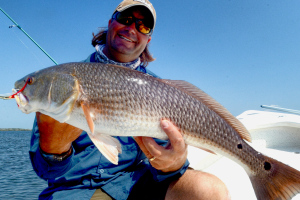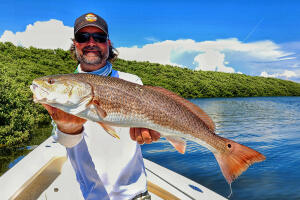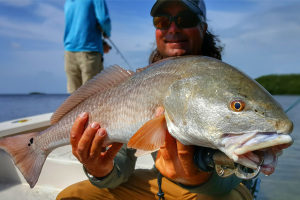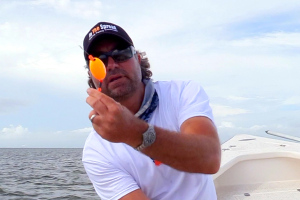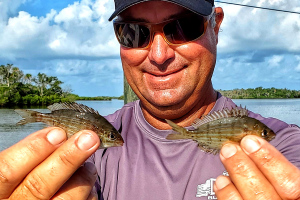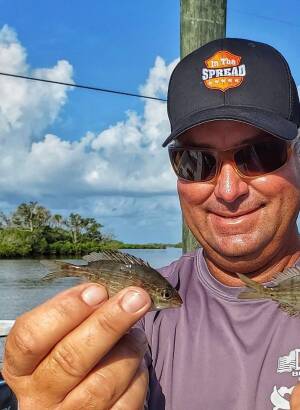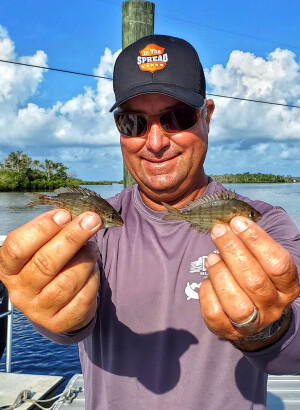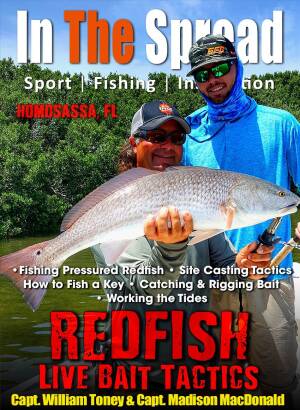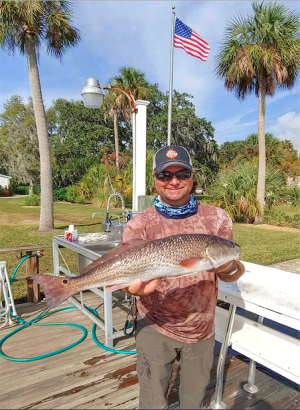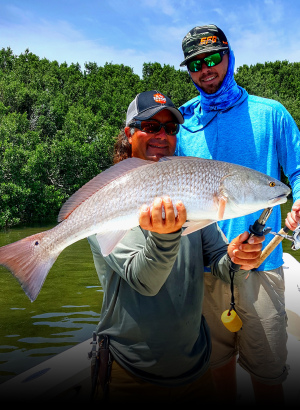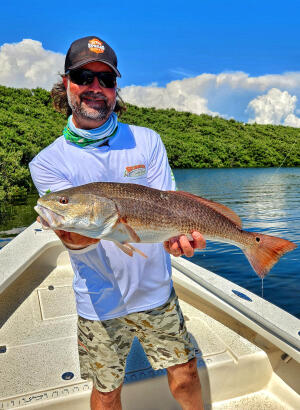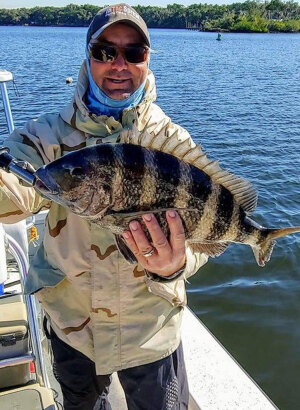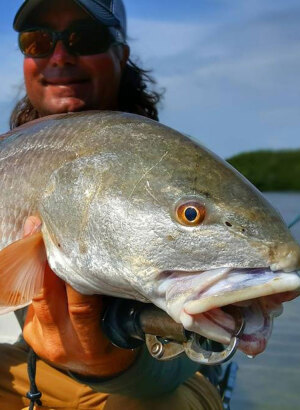Redfish, a sought-after game fish, are found in coastal areas of the US. They are known for their strength and fighting ability. To catch redfish, use the best bait and lures, the best time and place to catch them, and the right gear. Fishing techniques include live bait, artificial lures, and fly fishing. Be patient, use a strong hook, and keep the line tight.
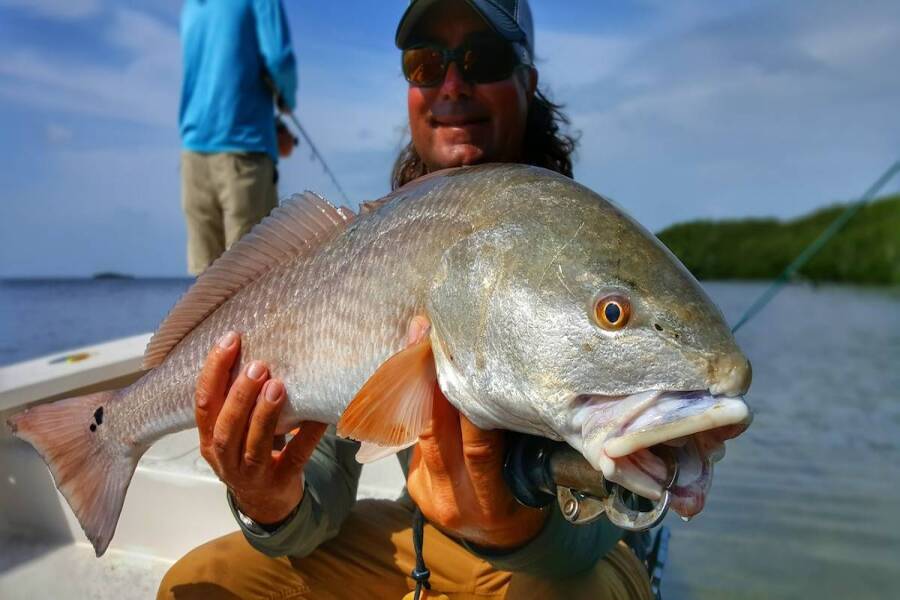
Redfish Fishing – Know the Species
Redfish (Sciaenops ocellatus), also known as red drum, are a robust, reddish-bronze fish known for its stamina and strength. A distinctive black spot near the tail fin characterizes it, believed to fool predators into attacking the tail instead of the head, giving the redfish a chance to escape. Redfish inhabit various environments, from shallow flats to deep offshore waters, making them a versatile target for anglers.
In size, they can vary considerably. Younger fish, often called "puppy drum," are typically found in shallower waters and estuaries. The larger, mature individuals, known as "bull reds," can exceed 27 inches and are often found in deeper waters.
Redfish are opportunistic feeders, with a diet consisting primarily of crustaceans like crabs and shrimp, as well as small fish. They play a significant role in both recreational and commercial fishing sectors. Known for their robust fight when hooked, they are a favorite target for sport fishing. In terms of habitat, they prefer shallow waters, often with grassy or muddy bottoms, and are commonly found around oyster beds, docks, and other structures.
Over the years, Redfish populations have faced various challenges, including overfishing. Conservation efforts and regulations have been implemented in many areas to ensure sustainable populations. These measures have included size and bag limits, as well as habitat protection efforts.
Redfish Fishing
- Habitat and Location: Redfish are commonly found in shallow inshore waters, including estuaries, bays, lagoons, and around structures like oyster beds, docks, and mangroves. They also frequent grassy flats and can be found along coastal beaches and inlets.
- Techniques and Tackle: Anglers use various techniques to catch redfish, including casting with spinning or baitcasting gear, fly fishing, and trolling. The choice of bait and lures can vary, but live bait like shrimp or pinfish is very effective. Artificial lures such as spoons, soft plastics, and topwater plugs are also popular.
- Sight Fishing: In shallow waters, sight fishing for redfish is a popular technique. Anglers look for signs of redfish, such as tailing (where the fish's tail appears above the water surface) or disturbances in the water. Stealth and precision in casting are crucial in this method.
- Seasons and Conditions: While redfish can be caught year-round, their activity levels and patterns change with the seasons. Factors like water temperature, tide, and time of day can significantly influence their behavior and feeding patterns.
How to Catch Redfish Like a Pro
Where are Redfish Found
- Atlantic Coast: Redfish are found along the eastern seaboard from Massachusetts down to Florida. Notable hotspots include the Chesapeake Bay, the Carolinas, and particularly the inshore waters of Florida, where they are a staple in the shallow, grassy flats and backcountry waters.
- Gulf of Mexico: This region is renowned for its redfish population. States like Louisiana, Texas, Alabama, Mississippi, and the west coast of Florida offer abundant redfish fishing opportunities. Louisiana's marshes and the Texas coast, especially around Galveston and Corpus Christi, are famous for their large "bull" reds.
- Florida: Florida's extensive coastline offers diverse redfish habitats, including the Indian River Lagoon, Mosquito Lagoon, all along the Panhandle, Tampa Bay, Homosassa and the Florida Keys. These areas are popular for both sight fishing and flats fishing.
- Louisiana: Often referred to as the Redfish Capital of the World, Louisiana's marshes and estuaries provide ideal conditions for redfish. The Mississippi River Delta is a particularly productive area.
- Texas: The Texas coast, with its bays and estuaries, is a prime spot for redfish. Locations like Matagorda Bay, San Antonio Bay, and the Laguna Madre are popular among anglers.
- Other Gulf States: Alabama and Mississippi also have good redfish populations, particularly in areas like Mobile Bay in Alabama and the coastal marshes in Mississippi.
Anglers approach redfish with various techniques, including sight casting on flats, fishing in deeper channels, and casting near structures. Local regulations and conservation measures are in place in many of these areas to protect redfish populations, emphasizing the importance of sustainable fishing practices.
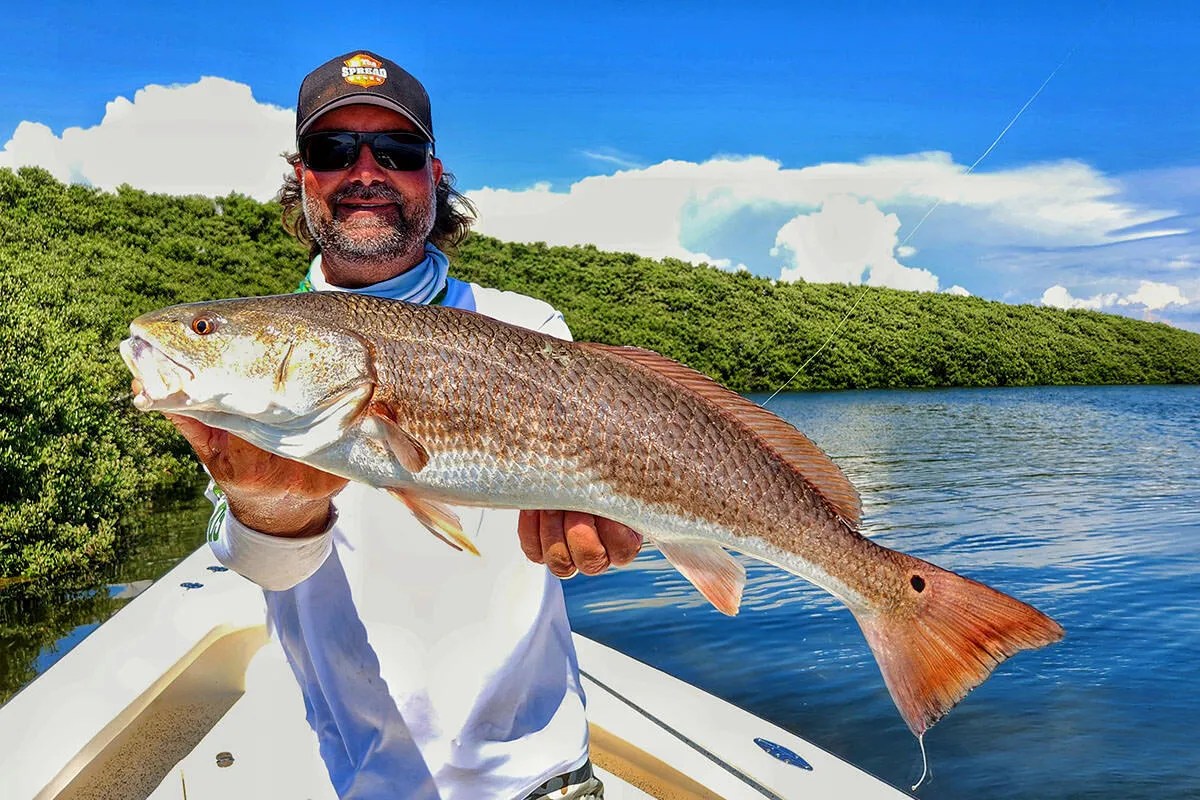
Best Time of Year to Fish for Redfish
- Fall (September to November): This is widely regarded as the prime season for redfish fishing, especially for catching larger "bull" redfish. During the fall, redfish are often found in schools and are more aggressive as they feed heavily in preparation for spawning. This period offers the opportunity to catch redfish in both shallow flats and deeper waters near inlets and passes.
- Summer (June to August): In the summer, redfish are active and can be found in shallow waters, especially early in the morning and late in the evening to avoid the midday heat. Sight fishing in shallow flats and grassy areas is popular during this time.
- Spring (March to May): As the water warms up, redfish become more active after the colder months. This season is known for consistent action, with redfish feeding in shallow waters and along grassy shorelines.
- Winter (December to February): In some areas, winter can still be a good time to target redfish, especially in southern regions like Florida and Louisiana where the waters don’t get too cold. During this time, redfish may be found in deeper, warmer waters. Fishing can be more challenging due to colder temperatures and less activity, but it can still be rewarding.
Also, local knowledge and up-to-date fishing reports can be invaluable in determining the best times to fish for redfish in a specific area. Regulations regarding redfish, such as size and bag limits, can vary by location and season, so it's important to stay informed about these to ensure sustainable and legal fishing practices.
Types of Redfish Fishing
- Sight Fishing: This method involves visually locating the redfish in shallow waters, often seen by their tails breaking the surface (tailing) while feeding. Anglers then cast lures or bait close to the fish. It requires stealth and precision, often done on foot, by kayak, or on a shallow-draft boat.
- Flats Fishing: This technique targets redfish in shallow, flat coastal waters, typically using light tackle or fly fishing gear. Flats fishing often involves poling a flatboat in very shallow waters to quietly approach redfish without spooking them.
- Fly Fishing: Fly fishing for redfish is a popular sport, especially in shallow flats and marshes. It requires specific fly fishing gear and techniques, using flies that mimic the redfish’s natural prey like crabs and small fish.
- Inshore Fishing: This is a broad category that includes fishing in estuaries, bays, marshes, and coastal waterways. It can involve casting from the shore, wading, or using a boat. Inshore fishing allows for a variety of techniques, from live bait to artificial lures.
- Kayak Fishing: Kayak fishing for redfish has gained popularity due to the kayak's ability to access shallow and narrow areas where larger boats can't go. It offers a stealthy approach and can be a more intimate fishing experience.
- Nearshore Fishing: This involves targeting larger, mature redfish (bull reds) in deeper waters, often near structures like jetties, reefs, or shipwrecks. It usually requires heavier tackle and may involve different bait and techniques compared to inshore fishing.
- Bottom Fishing: This technique is used in deeper waters, where baits are cast and allowed to settle near the bottom, targeting redfish that feed in these areas.
- Trolling: Less common for redfish but can be effective, especially around inlets and deeper channels. Trolling involves moving the boat slowly while dragging lures or bait behind it.

Best Live Bait for Redfish
When targeting redfish, understanding their feeding habits and preferences can significantly increase your chances of a successful catch. Redfish are known for their opportunistic feeding behavior, making them receptive to a wide range of baits. Among the most effective are live baits, which mimic the natural prey of redfish in their habitat.
Live shrimp are a top choice for many anglers. Their movement and scent are irresistible to redfish, making them an excellent option for both inshore and offshore fishing. Similarly, live crabs, particularly small blue crabs, are another favored bait. When using crabs, it's common to remove their claws to prevent them from defending themselves, making them more vulnerable to redfish.
Another effective live bait is croakers. These small fish, when used live, create vibrations and sounds that attract redfish. This makes them particularly useful in murky waters where visibility is low. Additionally, cut bait such as menhaden or mullet can be very effective, especially when fishing in areas with strong currents where the scent of the bait can travel and attract fish from a distance.
For anglers looking to use other small live baitfish, pinfish and grunts are excellent choices. These baitfish are commonly found in the same habitats as redfish, making them a natural part of the redfish's diet. When using these smaller fish, hooking them through the back or lips allows them to swim more naturally, thereby increasing the chances of attracting a redfish.
Understanding the behavior of redfish and the type of environment you're fishing in (such as the presence of oyster beds, grass flats, or muddy bottoms) can also guide your bait choice. Factors like water temperature, clarity, and the presence of natural prey in the area can all influence what type of bait will be most effective on any given day.
By combining knowledge of the local environment with a selection of these proven baits, anglers can increase their chances of a successful redfish catch. It's also important to remember that redfish regulations may vary by region, so it's crucial to be aware of and adhere to local fishing regulations.
Rigging Live Bait for Redfish
When rigging live bait for redfish, it's essential to tailor your setup to both the bait and the fish you're targeting. The right combination of leader, hook, and bait can make a significant difference in your fishing success.
Choosing the Right Hook:
- For Smaller Baitfish: When using smaller live baitfish like pinfish or grunts, a circle hook or J-hook is usually the best choice. Circle hooks are particularly effective because they often hook the fish in the corner of the mouth, making it easier to release the fish unharmed if needed. The size of the hook should be proportional to the size of the bait; a hook that's too large can hinder the natural movement of the bait, while a too-small hook may not be effective in hooking the redfish.
- For Larger Baitfish: Larger live baits like menhaden or larger croakers may require a bigger hook, and in some cases, anglers opt for a treble hook. However, treble hooks can cause more damage to the fish, so their use is often debated among conservation-minded anglers.
- The leader plays a crucial role in your rigging. It needs to be long enough to allow the bait to move naturally but not so long that it becomes cumbersome to cast or manage. A fluorocarbon leader is often preferred for its lower visibility in water and resistance to abrasion, especially in areas with oyster beds or rocky bottoms.
- The strength of the leader should be chosen based on the fishing environment. In clearer waters, a lighter leader may be more successful, while in murky waters or areas with heavy cover, a heavier leader is advisable.
Knots:
- Securely tying the leader to the main line is critical. The loop knot, uni knot or the improved clinch knot are popular choices for their strength and reliability. It's important to practice tying these knots until you can do so confidently and correctly, as a weak knot is often the weakest link in your fishing setup.
Matching Presentation to Conditions:
- The behavior of redfish can vary significantly based on conditions like tide, time of day, and water temperature. Adapting your bait selection to these conditions is crucial. For instance, in colder water, redfish might be slower and less aggressive, favoring a more subtle presentation.
- Each fishing area can be unique, and what works in one location might not be as effective in another. It's important to experiment with different baits and rigging techniques to discover what works best in your local waters.
The video "Redfish Live Bait - William Toney" can provide additional insights and pro-level skills for rigging live baits for redfish. Watching such videos can offer valuable practical tips and visual demonstrations that can enhance your fishing techniques. Remember, the key to success is often a combination of knowledge, skill, and adapting to the environment and the behavior of the fish.
Artificial Lures for Redfish
Artificial lures offer a versatile and often highly effective approach to catching redfish. The key to success with these lures lies in selecting the right type and using the appropriate technique for the conditions you're fishing in.
Soft Plastic Baits
- Types: Soft plastics, such as swimbaits, paddle tails, and shrimp or crab imitations, are extremely popular. These lures can mimic the movement and appearance of the redfish's natural prey.
- Rigging: Soft plastics can be rigged in various ways, but a weedless setup is particularly effective in areas with heavy cover, like grass flats or near oyster beds. A jig head can be used for deeper water or for a more aggressive presentation.
- Technique: When fishing with soft plastics, the retrieval technique can vary from a steady retrieve to a more erratic, "jerk and pause" style. This imitates a wounded or fleeing baitfish, which can trigger an aggressive response from redfish.
Topwater Plugs
- Types: Topwater plugs, including poppers and walk-the-dog style lures, are excellent for active redfish. These lures create surface disturbance that can attract redfish from a distance.
- Technique: The key to effectively using topwater plugs is in the retrieval motion. Poppers are designed to be jerked sharply to create a splashing sound, while walk-the-dog lures require a more rhythmic side-to-side motion to mimic a swimming fish.
- Conditions: Topwater plugs are most effective in calm, shallow waters, especially early in the morning or late in the afternoon when redfish are more likely to feed on the surface.
Spoons
- Effectiveness: Spoons are a classic lure for redfish due to their simplicity and effectiveness. Their wobbling action and reflective surface mimic a fleeing baitfish.
- Variety: There are many types of spoons, from narrow, elongated models to wider, more rounded shapes. The choice of spoon depends on the conditions and the depth of water you're fishing in. Gold and silver are great color options.
- Technique: Spoons can be retrieved in a steady manner or with an occasional jerk to create a more erratic action. They are especially effective for covering a lot of water quickly, making them ideal for locating active redfish.
General Tips for Using Artificial Lures
- Color Selection: The color of the lure can also play a significant role. In clear water, more natural colors tend to work best, while in murkier water, brighter colors or those with high contrast can be more effective.
- Adaptability: Be prepared to change lures and techniques based on the redfish's activity level and the environmental conditions. Observing the behavior of baitfish and other wildlife in the area can provide clues to the most effective approach.
- Practice: Like with any fishing technique, practice and experience are key. The more you use these lures, the better you'll become at understanding how to work them effectively to entice a strike.
In summary, artificial lures can be a powerful tool in your redfish fishing arsenal. By understanding the different types of lures, how to use them, and when they are most effective, you can significantly increase your chances of a successful fishing trip.
Redfish Fishing Gear and Rigs
- Fishing Lines and Reels: When targeting redfish, it's important to use a strong and durable fishing line that can handle the weight and power of the fish. Monofilament or braided lines with a test strength of 15 to 30 pounds are typically recommended for redfish fishing. In terms of reels, spinning reels or baitcasting reels are both effective options.
- Fishing Rods: A medium-heavy to heavy action fishing rod with a length of 7 to 8 feet is typically recommended for redfish fishing. The rod should have enough backbone to handle the weight and power of the fish, while still being sensitive enough to detect bites.
- Recommended Hook Size for Redfish: The recommended hook size for redfish can vary depending on the size of the fish and the bait being used. In general, a 3/0 to 5/0 circle hook or J-hook is a good choice for redfish fishing.
- Factors to Consider When Choosing the Right Hook Size: When choosing the right hook size for redfish, it's important to consider the size of the bait being used, as well as the size of the fish you are targeting. A hook that is too small may not be able to hold onto the bait or may not be strong enough to handle the weight of the fish, while a hook that is too large may be more difficult for the fish to take and may impede the bait's natural movement.
- Fishing Knots: Strong and reliable fishing knots are essential when targeting redfish. The uni knot and improved clinch knot are both popular and effective knots for attaching hooks and leaders to the main line.
- Rigs: There are several different types of rigs that can be used for redfish fishing, including Carolina rigs, popping cork rigs, and jig heads. Each rig is designed to present the bait or lure in a different way and may be more effective in certain conditions or with certain types of bait.
Popping cork rigs are pure magic for catching red drum. Watch to learn more in our video Redfish Popping Cork RIgs
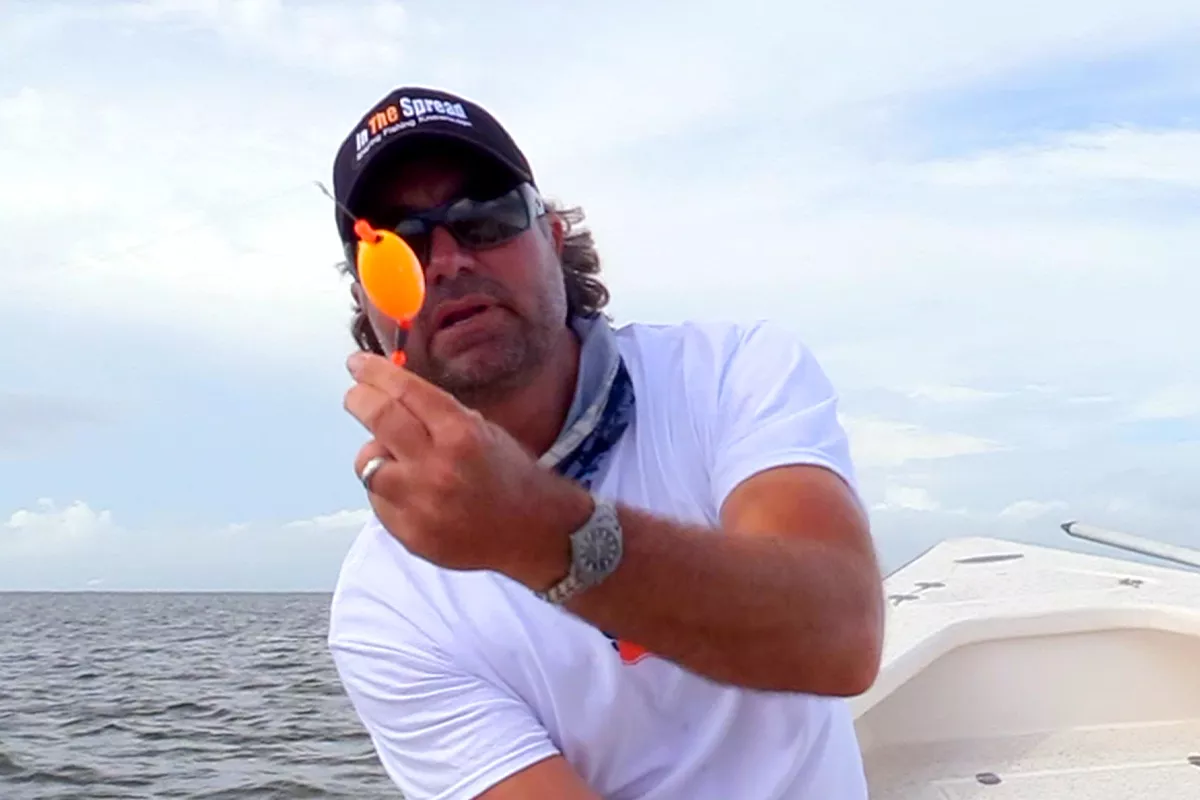
Conclusion
In conclusion, the pursuit of redfish represents more than just a sport—it's an art form that intertwines the beauty of nature, the thrill of the hunt, and the joy of the catch. Whether you are a seasoned angler or a beginner, redfish fishing offers a unique and rewarding experience. From the shallow flats and marshes to the deeper offshore waters, redfish challenge fishermen with their strength, resilience, and elusive nature. By understanding their habitats, feeding patterns, and behavior, anglers can improve their skills and increase their chances of a successful catch.


